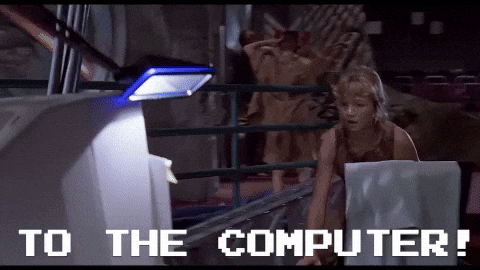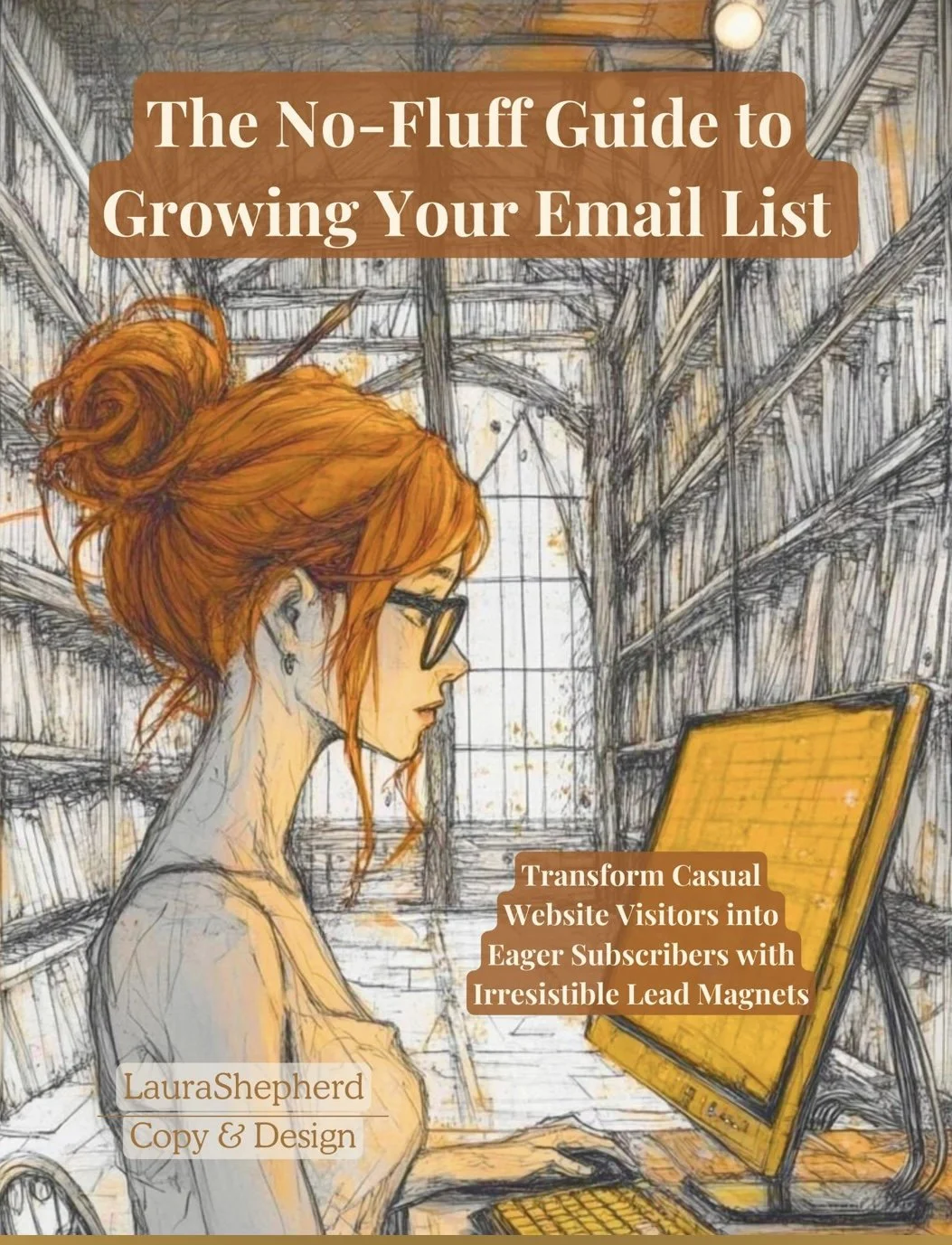Before You Hit Send: What Your Welcome Email Is Really Missing
Hint: Connection comes before credentials.
I remember the first welcome email I ever wrote, as a practice piece for a course I was taking. It was a Greatest Hits list of credentials— past jobs, proud client wins, all the reasons I thought someone should listen to me.
But when I reread it later? It sounded more like a LinkedIn pitch than an invitation. Super cringey.
It had polish, sure. But zero presence.
Possible footage of me, trying to prove my validity to the ENTIRE world-wide-web.
When someone joins your email list, it usually means they’ve just made a small, quiet decision:
“I think I trust this person— maybe just enough to listen.”
But this is where it often unravels. Instead of nurturing that new trust, many welcome emails launch into a crowded introduction:
“Hey, I’m [Name]—here’s my full background and résumé.”
“Let me tell you about my services, pricing, and how you can work with me!”
“Here’s the freebie you signed up for, along with 3 blog links and a client story, just in case.”
<< Don’t turn your welcome email into dinner theater. No one signed up for five courses and a show.
I promise your readers aren’t looking for the song and dance. They want to know they’re in the right place, confident that the expert on the other side of the email has something valuable to share.
Want to see a welcome email that does work?
Grab my [No-Fluff Guide to Growing Your Email List]—you’ll see how I build trust with one clear message at a time.
So what’s going wrong in the inbox?
Too many Most welcome sequences try to cover everything in one long email.
Cue: “Hi, how are you? • I’m GREAT! • Thanks for joining my email list. • Let me tell you my life story. • Now wanna know the nuance of each product? • Here’s my entire value system • Oh wait! I’ve got a half-dozen next steps.”
Take a breath, baby. 😥
You can check every “best practices” box, but something gets lost in the flood when it doesn’t feel like there’s an actual person on the other end.
Overloading your reader isn’t generous— it’s disorienting. And confused readers don’t convert.
Your welcome sequence is a doorway, not a demo.
The goal of a welcome email isn’t to hand someone a brochure. It’s to offer them a seat, set the tone, and offer a moment of recognition.
This is your first chance to make someone feel like they’re not just a number on your list.
You retain subscribers when you write with a sense of presence, not performance. Rushing anyone to buy, reply, or subscribe to a dozen things at once gets no traction.
Emails— where stories do their best work.
Good welcome emails don’t require a perfect story arc or a rock-bottom tale.
They need a glimpse of your real thinking. One clear thought. A spark of honesty. That’s what your reader connects to.
It can be as simple as:
A conversation that shifted your perspective
A pattern you see in the clients you help
A moment you realized what most people overlook
A quiet insight that changed how you approach your work
The story itself doesn’t need to be big. It just needs to be honest. When someone recognizes themselves in your words, they’re far more likely to keep listening.
Pro tip: I keep a “Noticing Notes” file on my phone, because I will forget that good idea if I don’t write it down. That’s where most of my email stories begin.
Want my favorite prompts for writing emails people actually want to read? Grab Porch Lights—a free guide to writing email content that lights the way.
What your reader is likely feeling when they join your list.
When someone signs up for your email list, it might feel like a small exchange— one new subscriber in a sea of data.
But for your business? And for your future readers? That moment is often full of opportunities— here’s how you can make the most of them.
They’re wondering if this will be another stream of marketing noise.
They’re hoping they didn’t just hand over their email to someone who will treat it like a transaction.
They may have signed up late at night, quietly looking for clarity, help, or hope.
Last night, your dream client wasn’t looking at your fancy marketing. They were looking for a moment of clarity.
Your welcome email is a company’s first message in that vulnerable moment.
And while it’s easy to default to explaining you charge your services, this is a chance to do something rare:
Help a human feel less alone in whatever they’re navigating.
Maybe your email audience is overwhelmed by their to-do list, unsure how to market themselves, or exhausted by the pressure to “show up” all the time. Ask them. Then listen to the deeper desire behind their to-dos.
Maybe they don’t know how to say what they want to say, and they’re looking for someone who gets it— and can help them find the words.
The more you can speak to that emotional reality, the more likely they will stay, read, and trust you.
And trust is the soil from which every conversion grows.
So, what should your welcome sequence accomplish?
A few good things to focus on:
Help your reader feel grounded (not rushed)
Give them one clear thought per email
Offer gentle ways to connect, not just click
Leave room for your personality to show up—without shouting
Most of all, keep it honest. If something feels robotic or “template-y,” trust that your reader will feel it too.
An Invitation to Self-Review
Not quite sure what your welcome emails are doing right now?
Here’s a DIY, no-pressure way to audit your sequence:
Ask yourself:
Does my first email acknowledge the reader’s world or introduce mine?
Am I trying to do too much too soon (bio, pitch, links, freebie, etc.)?
Is the tone consistent with how I speak in real life, or does it feel “markety”?
Does each email have one clear message? Or am I cramming too much in?
Have I made it easy for someone to reply, reflect, or feel invited?
If you see room for improvement, that's good. That means you care about your messaging. And that means your next version will be better.
If you’d like support shaping a sequence that sounds like you and connects with the right people, I’d love to help.
This is the work I do best— finding your brand's emotional heartbeat and building trust from that place, one email at a time.
Need Next Steps?
Next month, I’ll be back with a quick, actionable follow-up post that breaks this all down even further.
Your welcome sequence doesn’t need to impress. And it certainly doesn’t need to be perfect. But it does need to sound like you, and give your reader a reason to stay.





